Looks
The Sibylla Pretiosa, one of the most cryptic looks mantis species in captivity. Similar to the Gongylus Gongyloides, the Sibylla has many leafy projections on its legs and abdomen, and a camouflaged, twisted body. Females have a bright green wing case, which overlaps the end of the abdomen.
There is a small crest behind the head, in a diamond like shape, creating even more of a disguise. Like a Phylocrania Paradoxa, the Sibylla possess a large projection on the top of the head. They are only usually found in brown colours on the body, as green colours on the wings. Few variations have been seen. Females are around 5-6 cm long, with the males around 1cm shorter in length. Sex determination is the usual, 8 segments for the male, and 6 or 7 for the female, and females have a slightly wider, chunkier abdomen.
Antennae are very similar, so this may be an inaccurate way of sex determination at all stages. However, the male does possess slightly longer antennae, but this length difference will only be visible from L5 upwards.
Humidity and Temperature
Sibylla needs to be kept in a warm enclosure to try and emulate their natural conditions as much as possible. Temperatures from around 25-30c are required. Humidity as nymphs is essential, to overcome shedding problems. As hatchling, spraying is needed every day. This will not only soften skins, but will provide a source of water to drink. As the nymphs develop, spraying can become gradually more infrequent. As adult, spraying only once or twice a week will be needed.
Housing and Enclosure
Large enclosures are not needed as such, as the Sibylla is a fairly immobile species. With lengths rarely exceeding 6cm, a large enclosure can really prove a waste of space. Enough room will be needed to allow the mantis to successfully shed its skin. Branches, twigs and fake plants can bbe used to furnish the enclosure, so when your Sibylla shed their skin, they have plenty or surfaces to hang off.
Feeding is not usually a problem. Starting from hatchling, the Sibylla will readily take to food. Nymphs will consume fruit flies the day of hatching, however, this is not recommended. As with most species, the nymphs should be left 2-3 days after hatching, until introducing food. In these first days, daily spraying is essential. When the nymphs grow, food sizes will need to be increased. Flying prey is most appreciated. Food types such as flies, bees, wasps and wasps are all good to feed, and will provide the mantis wit a varied nutritional diet.
A well fed female will produce ootheca every 2 weeks. These ootheca may vary in size, however they will rarely exceed hatches of more than 50 nymphs. Nymphs will live communally until L4/5, where cannibalism will start to take place. Nymphs will need to be separated into their own, furnished enclosures.
Summary
The Sibylla Pretiosa is one of the stranger looking species in captivity, and along with this comes fascination. Bizarre behaviour and great camouflage makes it a unique species for the collection, and would be a great addition to any collection.
Sibylla Pretiosa in Culture
I’ve currently got several adult Sibylla couples which were raised from arounf L3/4. They have been eating very well, and I’ve successfully mated 2 of the pairs. I’ve had my first few ootheca from my adult females, so hopefully will have some nymphs over the coming weeks.
As you can see, they will readily take to large flying prey:
Sibylla Pretiosa Gallery
Please note the photos below have been collected from the web for reference, and each image links back to it’s original source. I don’t claim any copyright over these, and if you’ve got an image here that you’re not comfortable with and would like to be removed, then please get in touch.



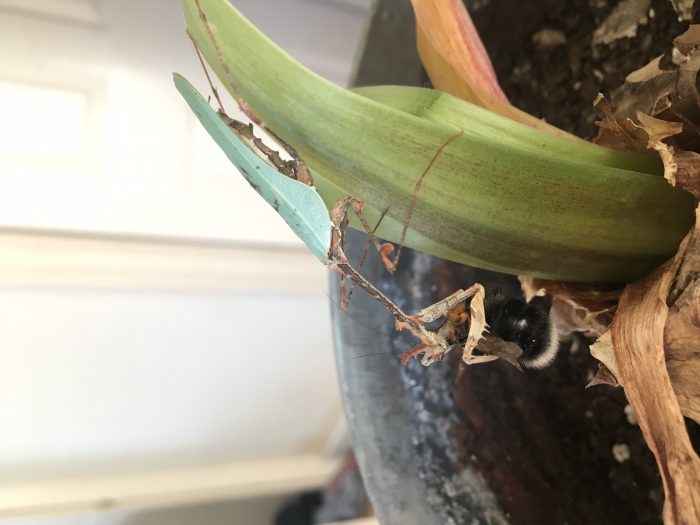
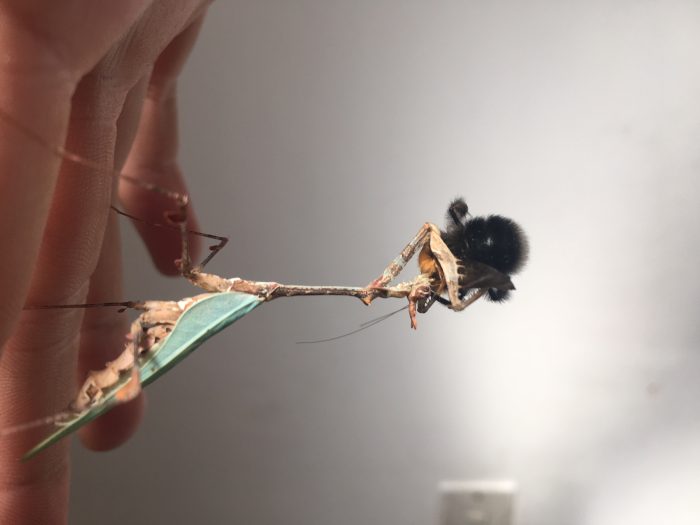
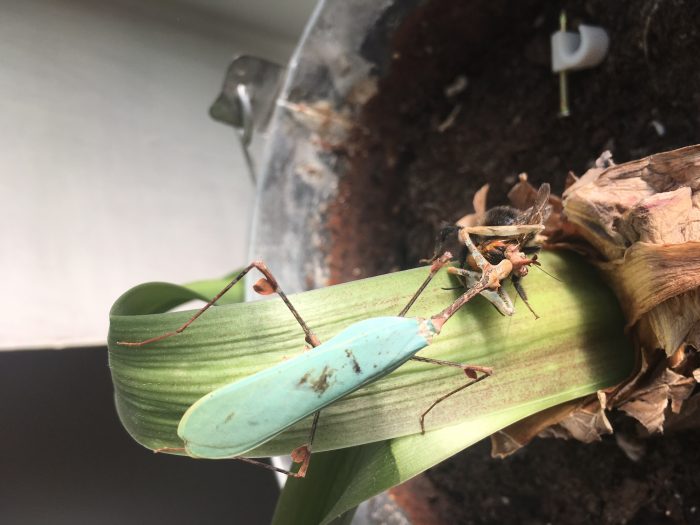
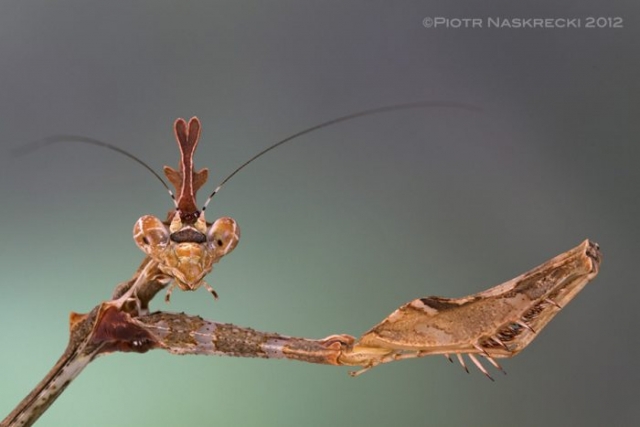
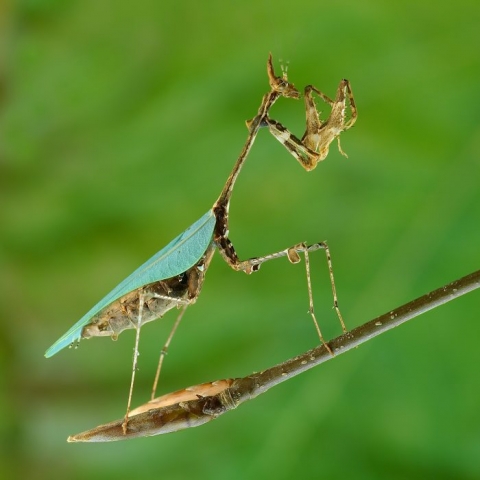
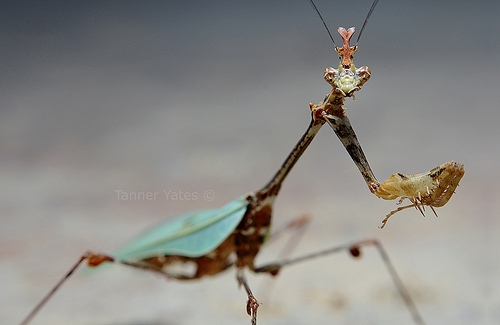
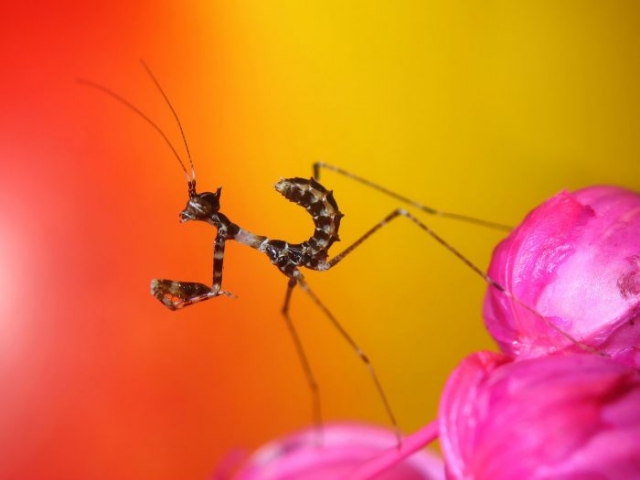
Sibylla Pretiosa (Cryptic Mantis) – Caresheet, ootheca & for sale discussion:
Feel free to post any comments on this species below:
Hi
Where can I buy a Cryptic Mantis?